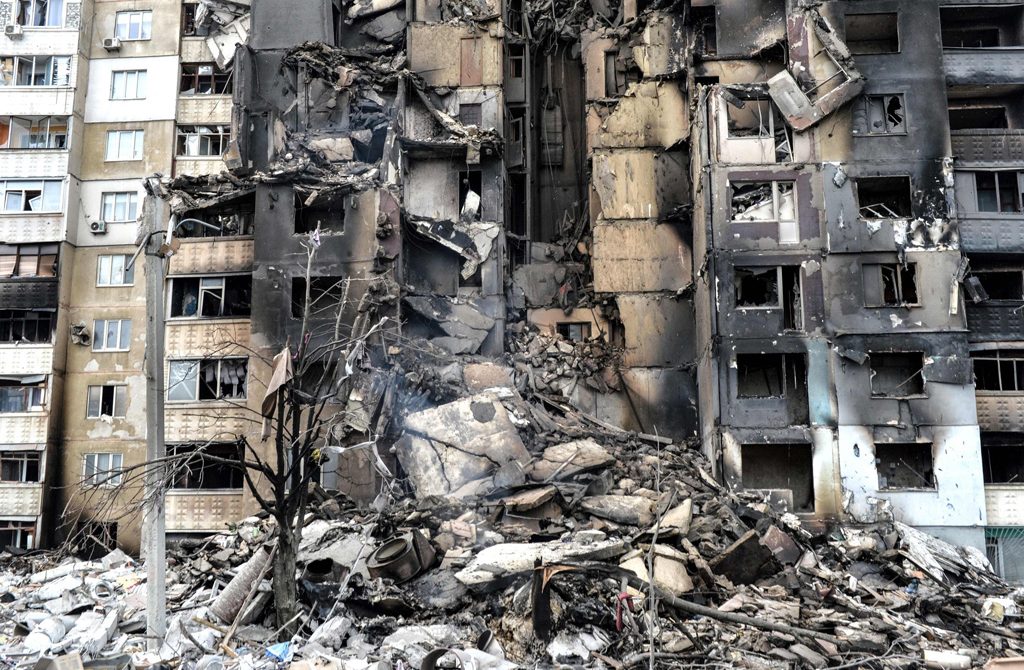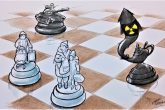The toll of the war on civilians in Ukraine is increasing every day. The harsh aerial bombings of some towns in Ukraine and the clashes between Ukrainian and Russian forces have generated another major refugee flow into the heart of Europe.
In the meantime, the diplomatic and economic confrontation between Russia and large segments of the international community is entering a new phase. There have been so many unexpected developments in this crisis and every day is adding more complexity to the situation. Most of the analysts today are trying to make sense of Russian actions in Ukraine over the past year. A large part are focusing on Russian President Vladimir Putin and attempting to understand his decision to go to war in Ukraine. The general consensus is that he made a major miscalculation. Even those who used to consider him a master tactician are puzzled by the state of events in the last two weeks. There are a series of developments that have made this change of mind possible.
First of all, Russia, particularly due to military operations in Syria, is believed to excel in low-cost, high-return interventions in key strategic locations. Unlike the “long and unending wars” of the United States, Russia is thought to seize the moment and use its military without facing significant challenges. When the operation in Ukraine started, many experts expected Russia to follow a similar path. Particularly the cyber-attacks in the first few days of the intervention gave the impression of a rather limited use of military power on the Russian end. At the end of the day, Kyiv was not Aleppo and Putin, from the American experience, is expected to know the Pottery Barn rule: You break it, you own it. However, in less than a week, this strategy failed. After it became obvious that the previous strategy would not work, the Russian government changed its strategy to a full-scale military intervention by using aerial bombing. This was the strategy that was implemented to a larger degree in Aleppo and other cities in northern Syria. However, once again it became clear that this may not generate the same outcome in Ukraine. The number of fighter jets and helicopters that were brought down by the Ukrainian forces within a week’s time now showed that a serious miscalculation was made.
Economic dimension
Secondly, if there had been an expectation that the operation would be a low cost operation for Moscow, two weeks of conflict demonstrated that this was another major miscalculation. And if they were not expecting the operation to be a low-cost one, there was not sufficient preparation.
First, the number of casualties from the Russian side within one week was higher than anybody expected. Even according to the Russian government, almost 500 Russian soldiers have died in the conflict so far and more than 1,500 have been wounded. The Ukrainian government and Western intelligence argue that the numbers are a lot higher than those claimed by the Russian government. This is the highest number of Russian casualties in a long period of time. This showed that Russia miscalculated the potential human cost of the war.
Furthermore, the economic cost of the Russian invasion was probably not foreseen by Putin before the war. The major economic sanctions against Russia, including the exclusion of some Russian banks from the SWIFT system, generated economic shock in Russia. The ruble lost its value and we saw major panic among the Russian people in the first days of the war. Although now there are arguments that say the continuation of sanctions will be mutually assured economic destruction, its impact on the Russian people and the Russian government will be more difficult to handle than the impact on any other country.
The diplomatic isolation
Thirdly, as a major diplomatic power, Russia is facing major diplomatic isolation following the war in Ukraine. In the last decade, Russia has been part of every global foreign policy initiative and involved in negotiations. This high-profile diplomatic presence of Russia faced a major shock in the last two weeks, as the country encounters widespread criticisms across the world. It became most obvious during the meetings at the United Nations in the aftermath of the beginning of the war. At the U.N. Security Council (UNSC) a majority of the countries made speeches condemning the Russian invasion of Ukraine. In particular, during the voting at the U.N. General Assembly (UNGA), only a handful of countries chose to support Russia, which demonstrated massive isolation on the Russian part.
Finally, at the information level as well, Russia does not seem to have calculated and prepared for an invasion. For the last several years, the Russian government’s ability and capability of impacting news cycles and information have been a much-debated issue around the world. The literature was filled with books on information warfare and how Russia excelled in this. However, in the last two weeks of the conflict, we did not see much success for Russia. The rationale about the “denazification” of Ukraine is not very convincing for large segments of the international community. More significantly, the photos of the civilian victims of the war and battered Russian equipment in Ukraine, further damaged Russia’s image around the world.
It is too early to predict the outcome of the war or to analyze the potential consequences of the conflict as things move very quickly. However, the first two weeks of the conflict demonstrated some significant events that were already unexpected. Those events show a certain level of problems in the planning and execution of the war on the Russian part.



